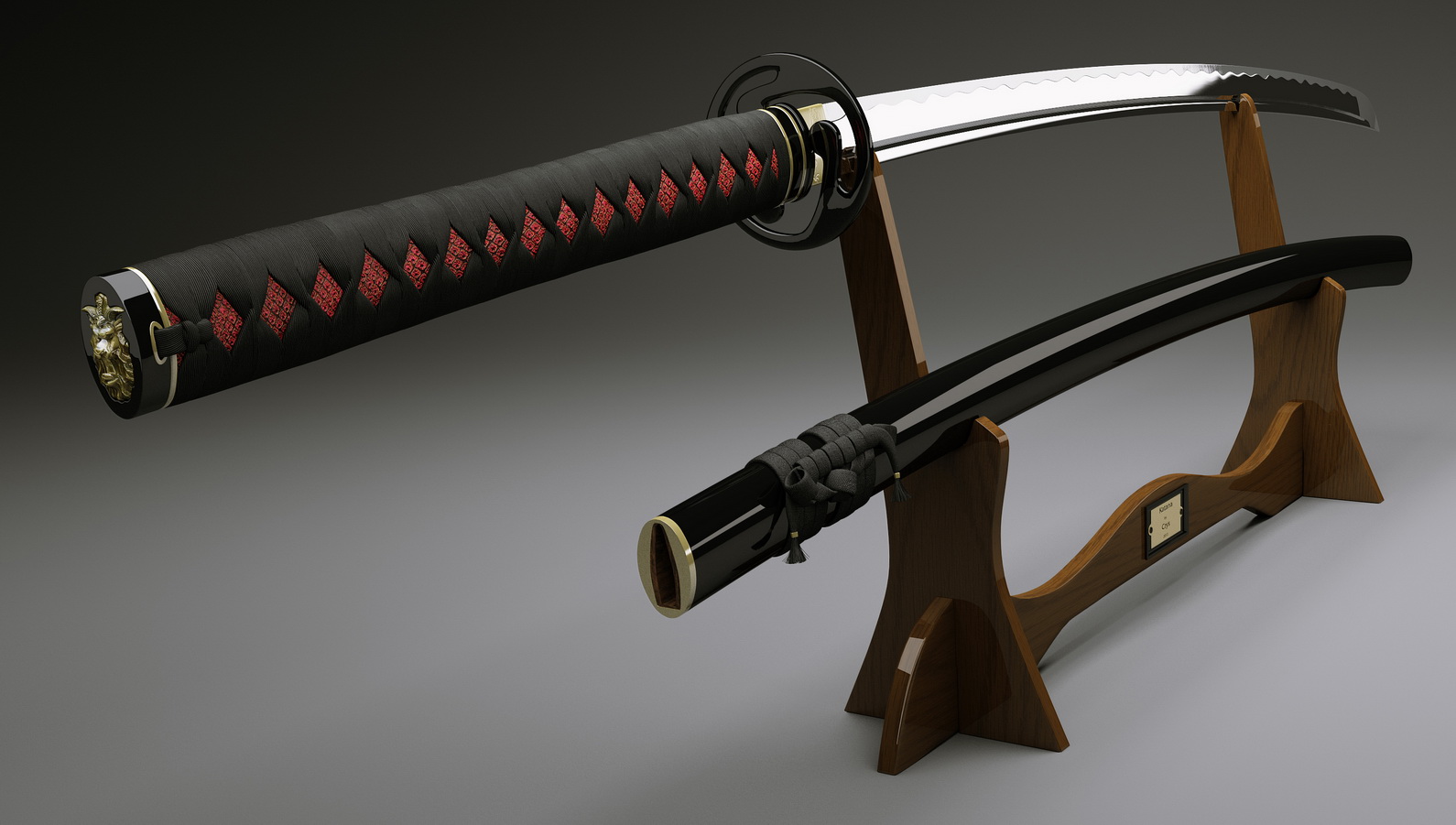The Japanese Katana Sword
The Japanese sword is considered by many to be the most beautiful and effective hand-held weapon in history. It is a curved single-edged blade that is characterized by its beauty, strength and accuracy. It was a weapon that was revered by the samurai, the warrior class of medieval Japan and it shaped much of their culture. The katana was developed by Japanese swordsmiths during the Muromachi period (1337 to 1573). These master craftsmen used differential heat treatment to create both a strong, flexible blade and a hard razor sharp edge. This was an advanced process that gave the katana its advantage over other swords of the time. It was also made from a more durable steel called Tamahagane. This steel is made from iron sand and charcoal that are heated in a clay tatara furnace. This process produces a steel with varying carbon content that is both harder and more flexible than pure iron. Along with the katana, other types of Japanese swords were also produced. These included the tachi, wakizashi and nodachi. The tachi was similar to the katana but was longer and more curved. The tachi was intended to be used against cavalry in open field battles. It was also a versatile sword that could be used for both slashing and thrusting attacks. A wakizashi was a shorter version of the tachi. It was also more curved and had a shorter blade than the katana. The wakizashi was designed to be more versatile than the tachi since it was more useful for close combat. The nodachi was a long, curved sword that was used by samurai mounted on horseback to combat cavalry and other foot soldiers in open field battles. It was also effective against men on foot and could be used in both slashing and thrusting attacks. Although the use of swords declined with the advent of firearms, the katana remained a sacred symbol to the samurai and continues to be an important part of Japanese culture. The process of sword making has become a highly specialized art that requires physical strength, patience and dexterity as well as a keen eye for the limit of the material. The most important part of any Japanese sword is the hamon. The hamon is the transition between the harder martensitic steel of the blade’s edge and the softer tempered core. The variations in the hamon are what give each sword its unique beauty, shape and color. The hamon is an indication of the period, swordsmith, school and even the location of the sword’s production. Other important features of a japanese sword include the blade length, the blade width and whether the tip is long (okissaki), medium (chukissaki) or short (kokissaki). It is also important to know if the sword has a flat shinogi, narrowing shinogi or one that grows wide towards the blade edge (ikuri-okissaki). It’s also important to determine how the blade was finished, such as nipple polishing, sandblasting or grinding. Mini katana for sale

